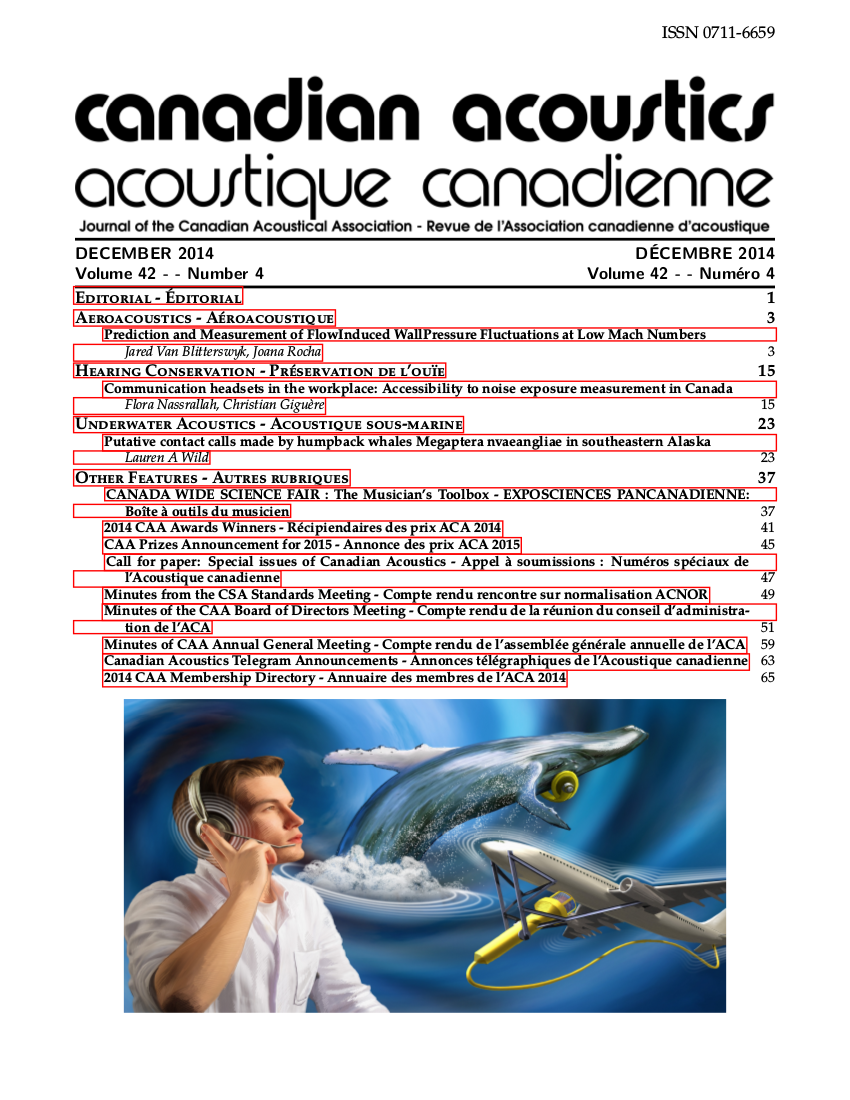Communication headsets in the workplace: Accessibility to noise exposure measurement in Canada
Keywords:
communication headsets, measurements, acoustic manikin, artificial ears?Abstract
Communication headsets and other wearable listening devices contribute to the noise exposure of a range of workers in their workplace. Users of these devices in occupational settings are subjected to both the audio signal from the headset and the surrounding external noise simultaneously. Two methods are currently described in ISO 11904 for direct measurement of sound exposure from communication headsets: the Microphone in the Real-Ear and the Acoustic Manikin. In addition, other standards propose the use of artificial-ear procedures or an indirect calculation method (AS/NZS 1269.1, CSA Z107.56) as alternative methods. However, there is currently little information related to the use of all these methods by researchers, audiologists, occupational hygienists, and other relevant professionals in occupational health and safety. A questionnaire was distributed to stakeholders in occupational health and safety and hearing loss prevention in Canada to document their awareness of the problem, their knowledge of the different measurement tools, and their access to this equipment. Results illustrate that knowledge of specialized measurement techniques and access to the necessary equipment varies significantly depending on the type of training of the different professionals.
Additional Files
Published
How to Cite
Issue
Section
License
Author Licensing Addendum
This Licensing Addendum ("Addendum") is entered into between the undersigned Author(s) and Canadian Acoustics journal published by the Canadian Acoustical Association (hereinafter referred to as the "Publisher"). The Author(s) and the Publisher agree as follows:
-
Retained Rights: The Author(s) retain(s) the following rights:
- The right to reproduce, distribute, and publicly display the Work on the Author's personal website or the website of the Author's institution.
- The right to use the Work in the Author's teaching activities and presentations.
- The right to include the Work in a compilation for the Author's personal use, not for sale.
-
Grant of License: The Author(s) grant(s) to the Publisher a worldwide exclusive license to publish, reproduce, distribute, and display the Work in Canadian Acoustics and any other formats and media deemed appropriate by the Publisher.
-
Attribution: The Publisher agrees to include proper attribution to the Author(s) in all publications and reproductions of the Work.
-
No Conflict: This Addendum is intended to be in harmony with, and not in conflict with, the terms and conditions of the original agreement entered into between the Author(s) and the Publisher.
-
Copyright Clause: Copyright on articles is held by the Author(s). The corresponding Author has the right to grant on behalf of all Authors and does grant on behalf of all Authors, a worldwide exclusive license to the Publisher and its licensees in perpetuity, in all forms, formats, and media (whether known now or created in the future), including but not limited to the rights to publish, reproduce, distribute, display, store, translate, create adaptations, reprints, include within collections, and create summaries, extracts, and/or abstracts of the Contribution.


